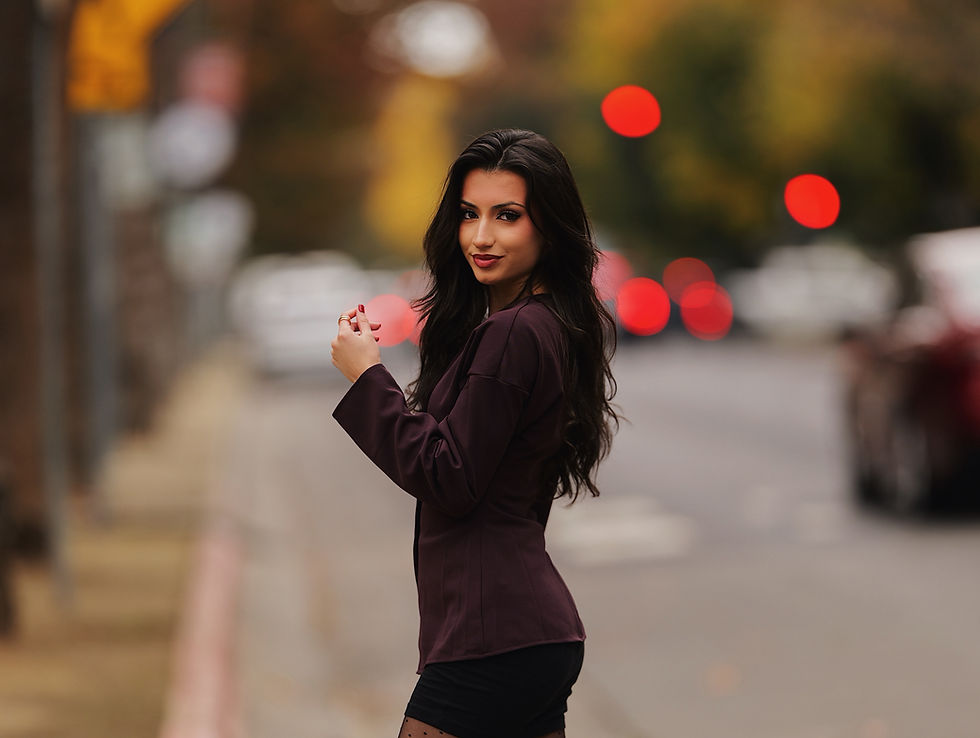Photography FAQ: Essential Tips and Gear for Stunning Portraits
- caliallstaring
- Aug 7, 2023
- 1 min read
In the world of photography, capturing mesmerizing portraits requires a combination of skill, gear, and creative vision. I often receive numerous questions about my techniques and equipment. In this blog post, I'll address some frequently asked questions and share valuable insights to help you achieve captivating portrait shots. Whether you're a seasoned professional or an enthusiastic hobbyist, these tips will elevate your portrait photography to the next level.
What kind of Fujifilm film simulation are you using?
I opt for Fujifilm's Pro Neg Hi film simulation for my portrait photography. With a careful adjustment of settings, I achieve a unique and stunning look. My current settings include Color +1, Highlight -1, Shadow 0, Sharpness +1, NR (-2), Color Chrome Effect: weak, Color Chrome Blue: weak, and a white balance set at 6100k. While I had previously explored the Classic Chrome simulation, I'm currently experimenting with Pro Neg Hi for a fresh perspective.



What camera mode are you using for portraits?
For complete control over exposure, I predominantly shoot in Manual (M) mode. This allows me to fine-tune settings according to the lighting conditions and desired artistic effect. In the past, I used Aperture Priority mode with a minimum shutter speed of 1/125s. However, I found that Aperture mode sometimes yielded unpredictable exposure shifts, particularly during video recordings in backlight situations. Thus, Manual mode became my go-to choice for consistent and precise results.
How to get sharp portraits in low light situations?
Achieving sharp and clear portraits in low light is essential for captivating images. To ensure sharpness, I always set my minimum shutter speed to 1/125s. In cases where the camera is equipped with internal stabilization (IBIS), a minimum shutter speed of 1/60s can often be sufficient. However, my preferred safe zone remains at 1/125s. If necessary, I'm not hesitant to increase the ISO from 400 to 1600 to obtain the right exposure while maintaining sharpness.
What camera bag are you using?
My trusted camera bag is the Brevite camera bag. Its design and functionality provide excellent protection for my gear, making it the ideal companion for my photography adventures.
How do you record your camera screen?
To record my camera screen, I utilize the Atomos Ninja V. This powerful tool allows me to capture high-quality footage, ensuring I can document my photography journey and share valuable content with others.
What's your favorite camera brand for portraits?
After a decade of experience, Fujifilm remains my favorite camera brand for its exceptional color rendition, which adds a unique charm to my portraits. Currently, I shoot with the Fuji X-H2. However, for professional paid clients' photoshoots, I rely on the Canon R6ii due to its remarkable color accuracy and advanced autofocus capabilities. While Sony's Eye AF is catching up, Canon continues to impress with its autofocus performance.
What's the best focal length for portraits - 35mm, 50mm, or 85mm?
The choice of focal length ultimately depends on your goal and artistic style. Each lens offers unique features that cater to different shooting scenarios, allowing you to achieve specific visual effects.
What are the benefits of using a 35mm lens for portraits?
A 35mm lens is a versatile option that excels in capturing environmental portraits. With its wider perspective, it can encompass more of the surroundings, making it ideal for candid shots or scenes where context is essential. Additionally, its ability to work well in tight spaces, such as a cozy coffee shop, ensures you can take stunning portraits without feeling confined.

How does a 50mm lens enhance portrait photography?
A 50mm lens strikes a balance between versatility and artistic expression. It produces a natural perspective and is often regarded as a "standard" focal length, closely resembling the human eye's field of view. This makes it perfect for capturing a variety of subjects, from individuals to small groups, while still maintaining a pleasing bokeh and providing sufficient context in the background.


What advantages does an 85mm lens offer for portrait photography?
An 85mm lens is prized for its ability to create beautifully blurred backgrounds and isolate the subject effectively. This focal length is particularly suited for capturing intimate and highly detailed portraits, as it allows you to distance yourself from the subject while maintaining an engaging composition. When faced with distracting backgrounds, an 85mm lens, especially with wide apertures like f/1.4 or f/1.2, can gracefully blur out any interruptions, resulting in captivating, ethereal portraits.


Photographing stunning portraits requires a blend of technical expertise, artistic vision, and reliable gear. By implementing the tips and techniques shared in this blog post, you'll be better equipped to capture breathtaking images that leave a lasting impact. Remember, photography is an ever-evolving art, so keep experimenting, refining your skills, and discovering new ways to create remarkable portraits. Happy shooting!




Comments